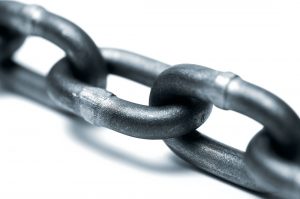In 2019, Google stated that the unfollow attribute would get two new ones: the sponsored and UGC (User Generated Content) attributes. In this article, we will discuss about the nofollow and sponsored tags and explore why these are important for marketers.
So, without further ado, let’s get started!
Nofollow and sponsored tags—What you need to know
Whenever you link to any other webpage, search engines, such as Google, will count this as a vote of confidence on the page you link to. Pages that have more such ‘votes’ from credible and reliable websites could be rated higher due to the search results (as they become more credible and reliable). That designates links almost a form of currency.
However, what happens when you have to link to a website but without necessarily having to vote for it? What’s keeping people from seeking ways to exploit the scheme, like posting the links to their website, comment forms, social media, forums, etc.?
In these situations, we need to use a specific form of relation to inform search engines, such as Google that they cannot be trusted.
Nofollow links
In the initial periods of SEO, various dishonest advertisers found that they could avail of thousands of links to their sites by inserting spam comments on other websites, purchasing links from website owners, or inserting links to any site requiring the content that is user-submitted.
To counteract this, Google launched a way for labelling a link as untrusted; explicitly, a way to say, “Don’t follow the link.” By applying a nofollow link to your ties, they will not be counted as votes. Google’s guideline then became that any link paid for (usually advertising, paid placement, etc.) must use the nofollow attribute to show that it should not affect their rating calculations.
This is because the paying links are regarded as the ‘vote of confidence’ on a website. For example, if anyone pays you for inserting an advertisement on your website, you might be taking people to the marketed product or page. As this isn’t naturally endorsed, the link value should not be moved over to this specific page; Google should not rate it higher unless you have earned any reward for this link.
This helps linking to a page that you may not want to endorse but still use as a reference, such as discussing the negative experience of a product or service.
In today’s time, the majority of the online platforms and comment systems have nofollow attributes to the content that users submit.
Sponsored tags
Now that we’re acquainted with what nofollow tags are, it’s simpler to grasp why sponsored tags have been added. When a piece of material on your website is advertising or paid placement, all connections are treated as supported or paid connections. Google has valuable details on link systems and specifies, and payment cannot be seen to manipulate the search results in any manner whatsoever.
Link attributes are not considered inaccurate and in the instance of sponsored links. Therefore, if you have any new supported content as of September 2019, it is important to let Google know by attaching a supported tag to the hyperlink to prevent the link scheme’s potential fines. Supported tags are favoured, although the unfollow tag is appropriate. If you have initially used “nofollow” tags to label sponsored content on social media, they will still be supported. But there’s no reason to alter the current tags now.
A few things to keep in mind
Please remember that Google considers these nofollow and sponsored tags as clues on which links to accept or delete in searches. They are not authoritative for search engine ranking applications. The updated attributes also make it easy for Google to process and comprehend web analytics connections. This evolution allows digital advertisers and Google to collaborate to deliver a fair and reliable experience for all internet users.
Nofollow attributes have traditionally been used as a decisive way of ensuring that Google does not editorially approve a source. This implied that Google had been actually missing out on other granular details such as finding the links that were ads, which were unsecured, which were inserted by webmasters, and the ones that were inserted by users.
Here are a few tips about how webmasters can treat new attributes.
The webmaster should:
Utilize a mix of various attributes where necessary (e.g., rel=”nofollow ugc”).
Use the nofollow or a mix of nofollow and sponsored attributes for the paid links.
If you still use the nofollow link on ads or supported links, there would be no markup changes needed, although Google advises that potential link elements be switched where this is convenient.
Wrapping Up
This article talked about nofollow and sponsored tags attributes, their significance, and how webmasters may use them individually or as a combination in their online content. If you have more information about this subject, please feel free to add it.




